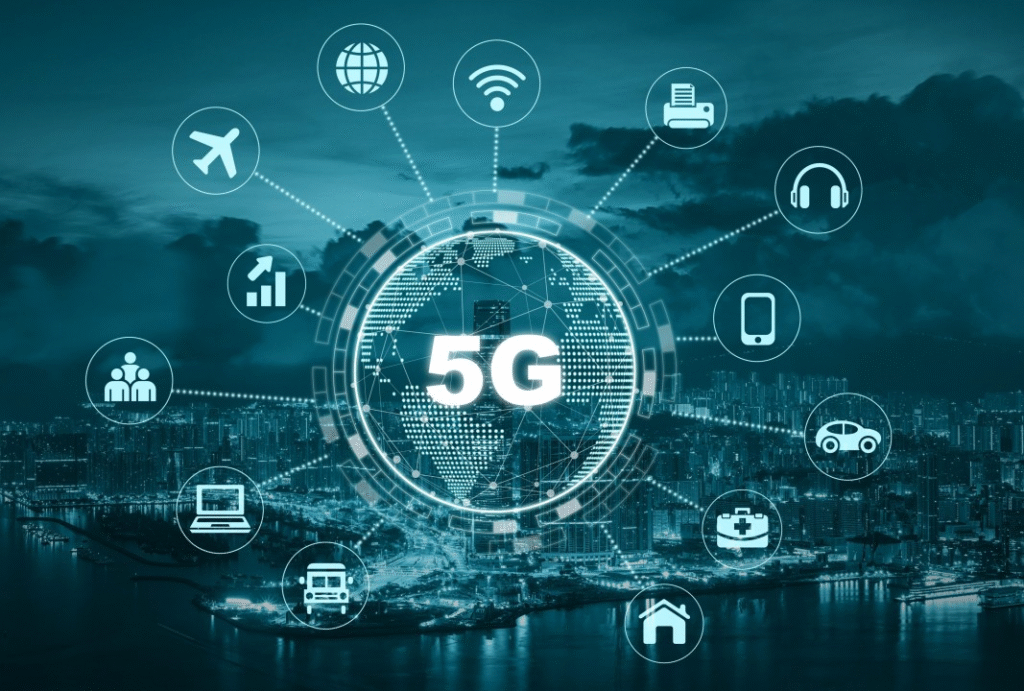The Impact of 5G on Smart Devices And Connectivity
- November 7, 2025
- 0
We are living in a decade that has seen more evolution in mobile technology than ever before — and at the center of it is 5G, or fifth generation,
We are living in a decade that has seen more evolution in mobile technology than ever before — and at the center of it is 5G, or fifth generation,

We are living in a decade that has seen more evolution in mobile technology than ever before — and at the center of it is 5G, or fifth generation, wireless communications. Indeed, 5G’s influence extends well beyond faster mobile internet — it’s also changing how our devices connect, communicate and cooperate with one another. From connected homes, to self-driving cars, 5G will create a hyper-connected society.

5G, or Fifth Generation, is the next generation of mobile communication standards, continuing from 4G LTE. It features ultra-fast internet speeds, low latency, and increased capacity to handle multiple billions of connected devices at once.
Unlike its predecessors, 5G operates on a wide range of frequencies and uses advanced technologies like massive MIMO-technology and beamforming to offer consistent, high-speed connectivity.
Simply stated, 5G can support more devices at high speeds and with minimal delay — a game changer for today’s technology.
The these is 5G revolutionized the world of smart devices. It facilitates easier, faster and more reliable communication between devices – something vital in the world of the IoT. Let’s take a look at the ways in which it is changing the game across sectors:
Smart homes will be able to perform more of their functions with 5G. Voice assistants, security cameras, thermostats and other connected gadgets can communicate with each other instantly without delay.
2. Revolutionizing Wearable Technology
5G supercharges devices worn on the body, such as smart watches and fitness trackers. Now they can also send real-time health notifications, transmit emergency alerts in real time and update data across platforms like never before.
5G’s effects go beyond the smartphone to city infrastructure, meaning traffic management systems could get smarter and viaducts could support intelligent energy. If car headlights, surveillance cameras and parking sensors can all talk to one another in real time, cities stand to become safer and more efficient.
Autonomous and connected cars need to be in constant communication with sensors, traffic lights and other vehicles. With 5G’s ultralow latency, information can be swapped among vehicles in milliseconds, minimizing wrecks and bolstering navigation precision.
In healthcare, the technology can be used for remote patient monitoring, robot assisted surgery and for telemedicine. By intelligent medical equipment real time data transmission, assist the doctor to make quick decisions and accurate judgment.

While the improvement in device performance is impressive, the Impact of 5G on connectivity is even more profound. It’s redefining how humans and machines interact across industries.
1. Lightning-Fast Speeds
5G can provide speeds up to 100 times faster than 4G. Downloading large files, streaming 4K videos, or gaming online-these will happen in the blink of an eye. This increased speed supports advanced technologies such as AR and VR.
5G reduces the latency, or the time it takes for data to travel from source to destination. This provides the real-time communication required for autonomous systems, telemedicine, and remote machinery operations.
5G is capable of connecting millions of devices within a small area. Thus, it can be perfect for IoT ecosystems in which many devices-from smart sensors to industrial machines-must interact seamlessly.
5G guarantees smooth operations even in high traffic or peak usage times, thanks to network reliability-a very important aspect for enterprises and emergency services.
The Impact of 5G isn’t limited to personal devices; it’s revolutionizing entire industries:
While that is the promise of 5G, here are some challenges in the way:
Infrastructure Costs: Building 5G towers and networks is expensive.
Device Compatibility: Not all devices support 5G yet.
Security Concerns: More connected devices translate to more threats to cybersecurity.
Gaps in Coverage: In most countries, 5G is still confined to major urban centers.
Despite these challenges, global adoption is growing rapidly, with the realization of this transformation driven by 5G.
The future of 5G involves intelligent connectivity: a world where AI, IoT, and edge computing come together. What does a world with seamless machine communication, city operations, and personal interaction with technology in real time sound like? That’s just what 5G is trying to bring alive.
As 5G networks spread, we will see innovations such as the following:
Also Read : Edge Computing vs. Cloud Computing: What’s Best For Modern Enterprises?
The impact of 5G goes beyond faster internet; it represents a technological revolution driving innovation across industries, devices, and human experiences. With 5G comes the ability to enable smarter devices and stronger connectivity, ultimately building the digital backbone of the future.
From enterprises to developers and consumers alike, the adoption of 5G technology is ushering in a new era of speed, intelligence, and limitless connectivity, where every device, every connection, and every moment matters.